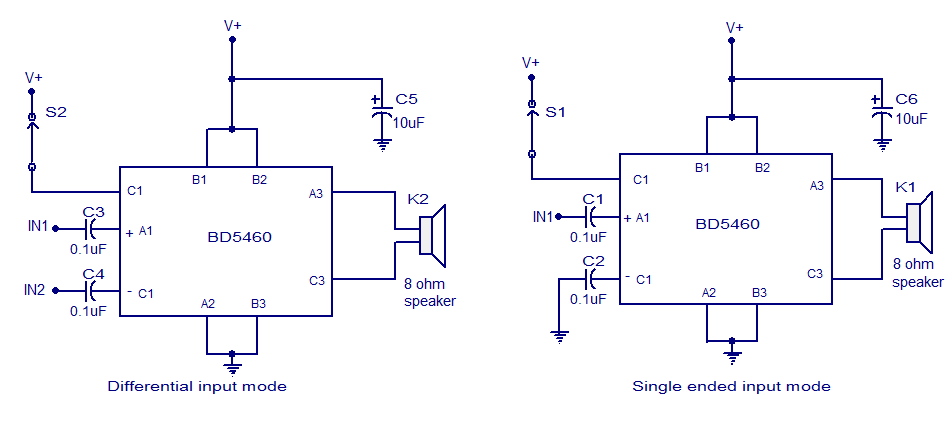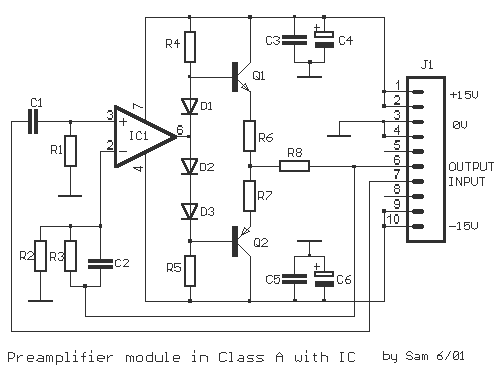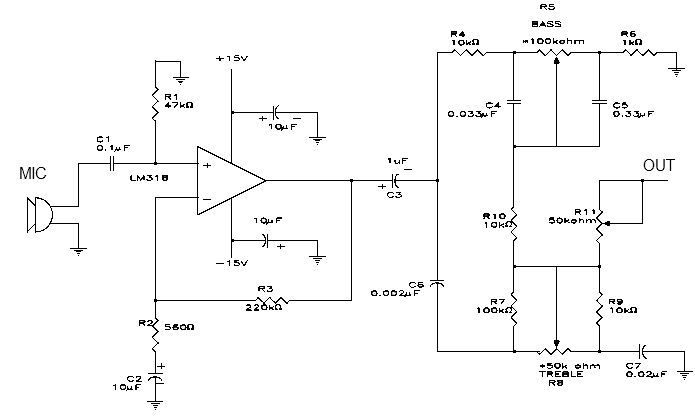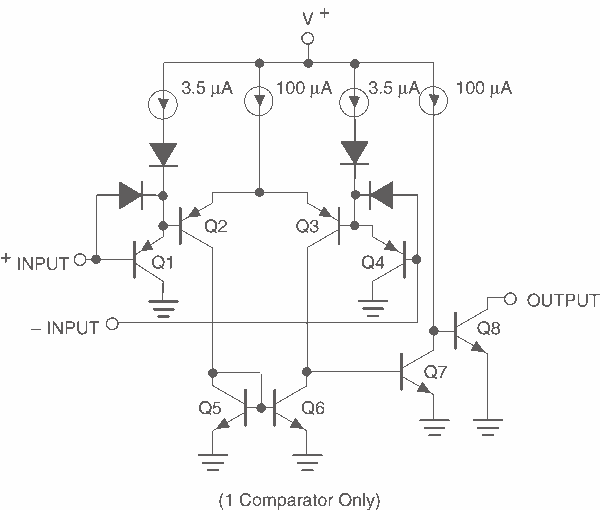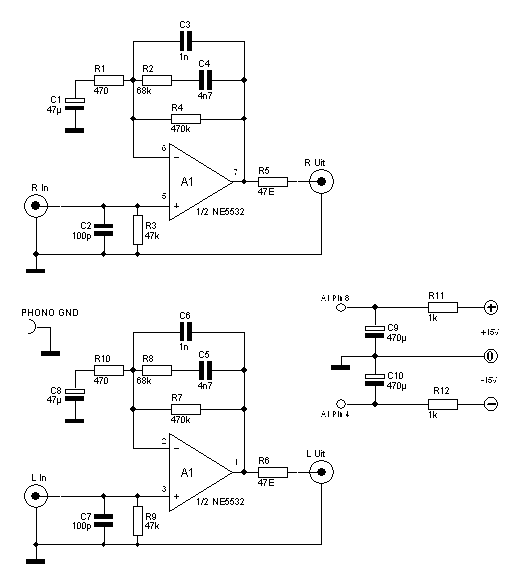
Operational Amplifier Voltage Comparator Circuits

A voltage comparator is a device that compares the voltages at its two inputs and generates an output based on the comparison. It produces a high output when the positive input exceeds the negative input and a low output when the positive input is lower. The comparator outputs a digital signal indicating which of the two input signals is greater. The acceptable analog inputs depend on the specific voltage comparator used and the power supply voltage. The digital output can vary based on the comparator and its power supply, potentially including configurations such as Open Drain, Open Collector, TTL Totem Pole, LVDS, or Push-Pull, allowing for direct interfacing with various TTL logic families. Although a voltage comparator is distinct from an operational amplifier, terminology such as inverting and non-inverting may still apply. An inverting comparator applies a signal to the negative input while the positive input is held at a reference voltage. Conversely, a non-inverting comparator applies the signal to the positive input and maintains the negative input at a reference voltage. This terminology relates to the input being above a reference and the output switching high (non-inverting) or low (inverting). A zero-crossing detector can be implemented by applying the input to the positive terminal and grounding the negative terminal, resulting in a high output when the input exceeds the ground reference. Hysteresis can be introduced by applying feedback, allowing the configuration to resemble an operational amplifier circuit, though it remains a comparator. The input resistor (Ri) and feedback resistor (Rf) determine the voltage hysteresis (Vh), calculated as Vh = Ri/(Rf + Ri). A 1 Megohm resistor connected between the positive input and ground serves as a compensation resistor rather than part of the hysteresis function. A 3k pull-up resistor connecting Vcc to the output establishes the output voltage level. The LM339 voltage comparator, featuring an open-collector output, requires an external pull-up to achieve the desired output voltage. The Vcc voltage can differ from the device's power supply, accommodating various output interfaces, such as pulling to 5 volts for TTL logic or 3.3 volts for compatible components. Voltage comparators are available in the same package types as operational amplifiers, including through-hole options like Plastic DIP and Ceramic DIP (for military and space applications), as well as surface mount configurations such as SOIC. The standard package typically contains 14 pins and houses four individual comparators, as exemplified by the LM339 quad package. A 14-pin LM339 in a plastic DIP from STMicroelectronics is noted, with the letter N indicating the plastic DIP package. Notably, unused inputs in a voltage comparator must be connected to the negative voltage supply, which differs from the handling of unused inputs in operational amplifiers.
A voltage comparator functions primarily by comparing two input voltages and outputting a signal that indicates which input is greater. The device operates effectively within a range of voltages defined by the specific model and its power supply. Common applications include signal conditioning, level detection, and zero-crossing detection, where the comparator can determine when an input signal crosses a predefined threshold.
The LM339 comparator, a widely used component, features an open-collector output, necessitating an external pull-up resistor to establish the desired output voltage level. This flexibility allows the output to interface with various logic families, making it suitable for diverse electronic applications. The choice of pull-up voltage can be tailored to the requirements of the connected circuitry, whether it be standard TTL logic levels or lower voltage systems.
In terms of packaging, the LM339 is available in multiple formats, including DIP and SOIC, allowing for integration into various circuit designs. The 14-pin configuration provides ample space for multiple comparators on a single chip, enhancing design efficiency. Proper handling of unused inputs is crucial to prevent unintended behavior, and connecting these inputs to the negative supply ensures stable operation.
Overall, the voltage comparator is a versatile and essential component in modern electronic design, offering straightforward voltage comparison capabilities while interfacing seamlessly with digital logic systems.A voltage comparator is a device that compares the voltage at the two inputs and develops an output based on the inputs. A high output when the plus input is greater than the minus input or a low output when the plus input is less than the minus input.
A comparator is a component that compares the two analog inputs and outputs a digital signal tha t represents which input signal is greater than the other. An acceptable analog input depends on the actual voltage comparator used and the voltage used to power it. The digital output can be almost any digital signal and again depends on the comparator and the voltage used to power it.
However; the outputs might include an Open Drain, Open Collector, TTL Totem Pole, LVDS, or Push-Pull, to list the most common. So even though the input is analog, the output could directly interface with many of the TTL logic families.
Although the voltage comparator is not an operational amplifier, an application might still use the terms inverting and non-inverting. An inverting voltage comparator would apply a signal to the minus input while the plus terminal is fixed to a voltage reference.
The non-inverting voltage comparator would apply the signal to the plus input while the minus terminal is fixed to a voltage reference. So the terms apply to an input being above a reference and than having the output switch either high [non-inverting] or low [inverting].
A zero crossing detector may be produced by applying the input to the plus terminal and grounding the minus terminal. The output goes high when the input goes above the ground reference. Hysteresis may be added to a voltage comparator by applying feedback. The configuration begins to appear like an operational amplifier circuit, but the circuit is still a comparator and will never function as an Op-Amp.
The input resistor [Ri] and the feedback resistor [Rf] determine the voltage hysteresis [Vh]. Vh = Ri/(Rf + Ri) The 1 Meg resistor between the plus input and ground is just a compensation resistor and not part of the hysteresis function. The 3k pull-up resistor between Vcc and the output sets the voltage level of the output. The example voltage comparator used is an LM339 which uses an open-collector output, which means the output needs to be pulled high to some level.
The Vcc voltage need not be the same voltage that is used to power the device, and can be changed to accommodate different output interfaces. For example the output could be pulled to 5 volts to interface with 5 volt TTL logic or 3. 3 volts to interface with that series of parts [regardless of the power being supplied to the IC]. Voltage comparators are available in the same package options as operational amplifiers. The through-hole packages may be either Plastic DIP Package, or Ceramic DIP Package [for military and space applications], while the surface mount versions will be in a SOIC Package.
The standard package contains 14 pins and holds four individual comparators, as the LM339 defines a quad package. A 14 pin LM339 in a plastic DIP, produced by STMicroelectronics, is shown to the right. The letter N after the part number signifies a plastic DIP package. Voltage comparators are also different from operational amplifiers when it comes to unused devices within a package.
Unused inputs on a voltage comparator need to be tied to the negative voltage supply; again this differs from an Op-Amp. 🔗 External reference
A voltage comparator functions primarily by comparing two input voltages and outputting a signal that indicates which input is greater. The device operates effectively within a range of voltages defined by the specific model and its power supply. Common applications include signal conditioning, level detection, and zero-crossing detection, where the comparator can determine when an input signal crosses a predefined threshold.
The LM339 comparator, a widely used component, features an open-collector output, necessitating an external pull-up resistor to establish the desired output voltage level. This flexibility allows the output to interface with various logic families, making it suitable for diverse electronic applications. The choice of pull-up voltage can be tailored to the requirements of the connected circuitry, whether it be standard TTL logic levels or lower voltage systems.
In terms of packaging, the LM339 is available in multiple formats, including DIP and SOIC, allowing for integration into various circuit designs. The 14-pin configuration provides ample space for multiple comparators on a single chip, enhancing design efficiency. Proper handling of unused inputs is crucial to prevent unintended behavior, and connecting these inputs to the negative supply ensures stable operation.
Overall, the voltage comparator is a versatile and essential component in modern electronic design, offering straightforward voltage comparison capabilities while interfacing seamlessly with digital logic systems.A voltage comparator is a device that compares the voltage at the two inputs and develops an output based on the inputs. A high output when the plus input is greater than the minus input or a low output when the plus input is less than the minus input.
A comparator is a component that compares the two analog inputs and outputs a digital signal tha t represents which input signal is greater than the other. An acceptable analog input depends on the actual voltage comparator used and the voltage used to power it. The digital output can be almost any digital signal and again depends on the comparator and the voltage used to power it.
However; the outputs might include an Open Drain, Open Collector, TTL Totem Pole, LVDS, or Push-Pull, to list the most common. So even though the input is analog, the output could directly interface with many of the TTL logic families.
Although the voltage comparator is not an operational amplifier, an application might still use the terms inverting and non-inverting. An inverting voltage comparator would apply a signal to the minus input while the plus terminal is fixed to a voltage reference.
The non-inverting voltage comparator would apply the signal to the plus input while the minus terminal is fixed to a voltage reference. So the terms apply to an input being above a reference and than having the output switch either high [non-inverting] or low [inverting].
A zero crossing detector may be produced by applying the input to the plus terminal and grounding the minus terminal. The output goes high when the input goes above the ground reference. Hysteresis may be added to a voltage comparator by applying feedback. The configuration begins to appear like an operational amplifier circuit, but the circuit is still a comparator and will never function as an Op-Amp.
The input resistor [Ri] and the feedback resistor [Rf] determine the voltage hysteresis [Vh]. Vh = Ri/(Rf + Ri) The 1 Meg resistor between the plus input and ground is just a compensation resistor and not part of the hysteresis function. The 3k pull-up resistor between Vcc and the output sets the voltage level of the output. The example voltage comparator used is an LM339 which uses an open-collector output, which means the output needs to be pulled high to some level.
The Vcc voltage need not be the same voltage that is used to power the device, and can be changed to accommodate different output interfaces. For example the output could be pulled to 5 volts to interface with 5 volt TTL logic or 3. 3 volts to interface with that series of parts [regardless of the power being supplied to the IC]. Voltage comparators are available in the same package options as operational amplifiers. The through-hole packages may be either Plastic DIP Package, or Ceramic DIP Package [for military and space applications], while the surface mount versions will be in a SOIC Package.
The standard package contains 14 pins and holds four individual comparators, as the LM339 defines a quad package. A 14 pin LM339 in a plastic DIP, produced by STMicroelectronics, is shown to the right. The letter N after the part number signifies a plastic DIP package. Voltage comparators are also different from operational amplifiers when it comes to unused devices within a package.
Unused inputs on a voltage comparator need to be tied to the negative voltage supply; again this differs from an Op-Amp. 🔗 External reference
